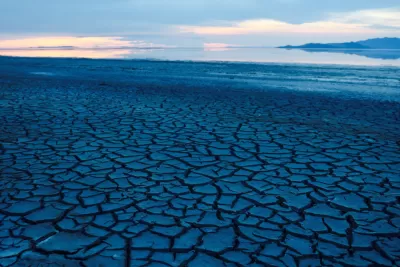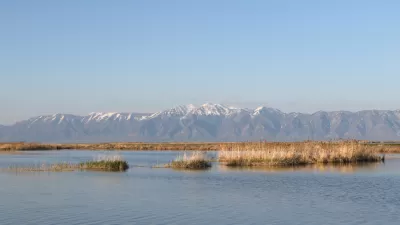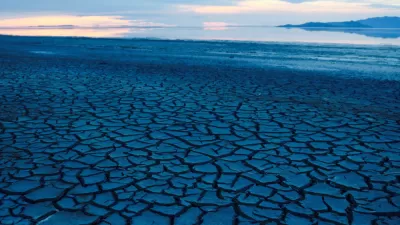New research is quantifying the environmental consequences of land use patterns and water diversions in Northern Utah.

Brian Maffly shares news of new research led by Greg Carling, professor of Geology at Brigham Young University, quantifying the effects of a shrinking, drying Great Salt Lake.
Upwind from northern Utah’s urban centers is a network of lakebeds, dried-up remnants of a vast prehistoric inland sea that dominated the region when the climate was much wetter and cooler that it is today.
Now, as western Utah becomes even drier — from drought, water diversions and climate change — these playas have become a major source of dust settling on Wasatch Front cities and their mountain water sources, according to new research conducted by Brigham Young University geologists.
According to the study, 90 percent of the dust comes from the exposed beds of the Great Salk Lake, Sevier Lake, and other valleys. That dust, large particulate matter PM10, causes problems for snowpack and water supply in the Wasatch Front region. An emerging field of research is connecting land use practices and water diversions to the effects of dust on water supply. The picture that has emerged is "alarming," explains Maffly.
FULL STORY: BYU study links shrinking Great Salt Lake, other vanishing water bodies to 90% of northern Utah’s dust

Planetizen Federal Action Tracker
A weekly monitor of how Trump’s orders and actions are impacting planners and planning in America.

Restaurant Patios Were a Pandemic Win — Why Were They so Hard to Keep?
Social distancing requirements and changes in travel patterns prompted cities to pilot new uses for street and sidewalk space. Then it got complicated.

Map: Where Senate Republicans Want to Sell Your Public Lands
For public land advocates, the Senate Republicans’ proposal to sell millions of acres of public land in the West is “the biggest fight of their careers.”

Maui's Vacation Rental Debate Turns Ugly
Verbal attacks, misinformation campaigns and fistfights plague a high-stakes debate to convert thousands of vacation rentals into long-term housing.

San Francisco Suspends Traffic Calming Amidst Record Deaths
Citing “a challenging fiscal landscape,” the city will cease the program on the heels of 42 traffic deaths, including 24 pedestrians.

California Homeless Arrests, Citations Spike After Ruling
An investigation reveals that anti-homeless actions increased up to 500% after Grants Pass v. Johnson — even in cities claiming no policy change.
Urban Design for Planners 1: Software Tools
This six-course series explores essential urban design concepts using open source software and equips planners with the tools they need to participate fully in the urban design process.
Planning for Universal Design
Learn the tools for implementing Universal Design in planning regulations.
Heyer Gruel & Associates PA
JM Goldson LLC
Custer County Colorado
City of Camden Redevelopment Agency
City of Astoria
Transportation Research & Education Center (TREC) at Portland State University
Camden Redevelopment Agency
City of Claremont
Municipality of Princeton (NJ)





























